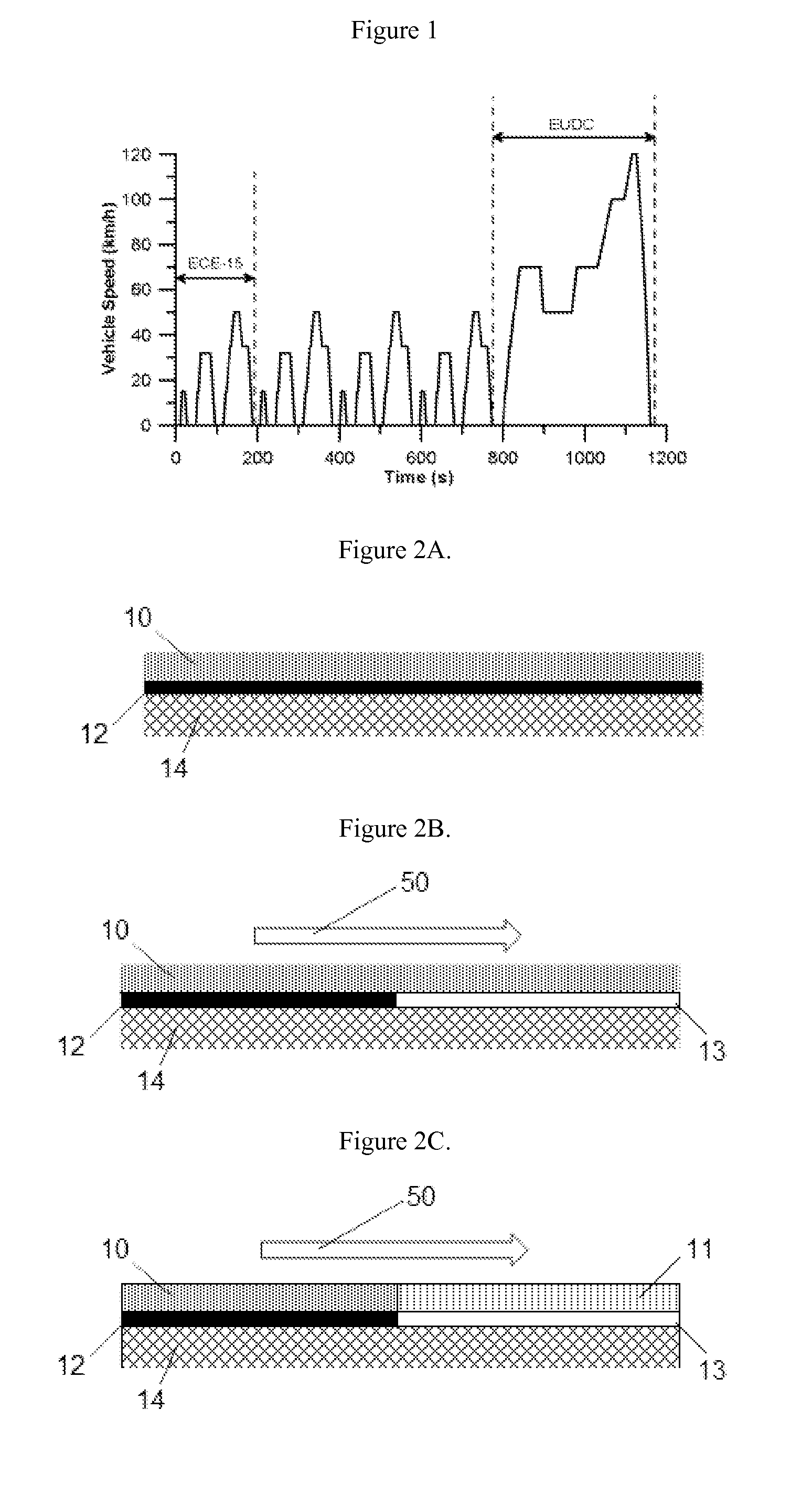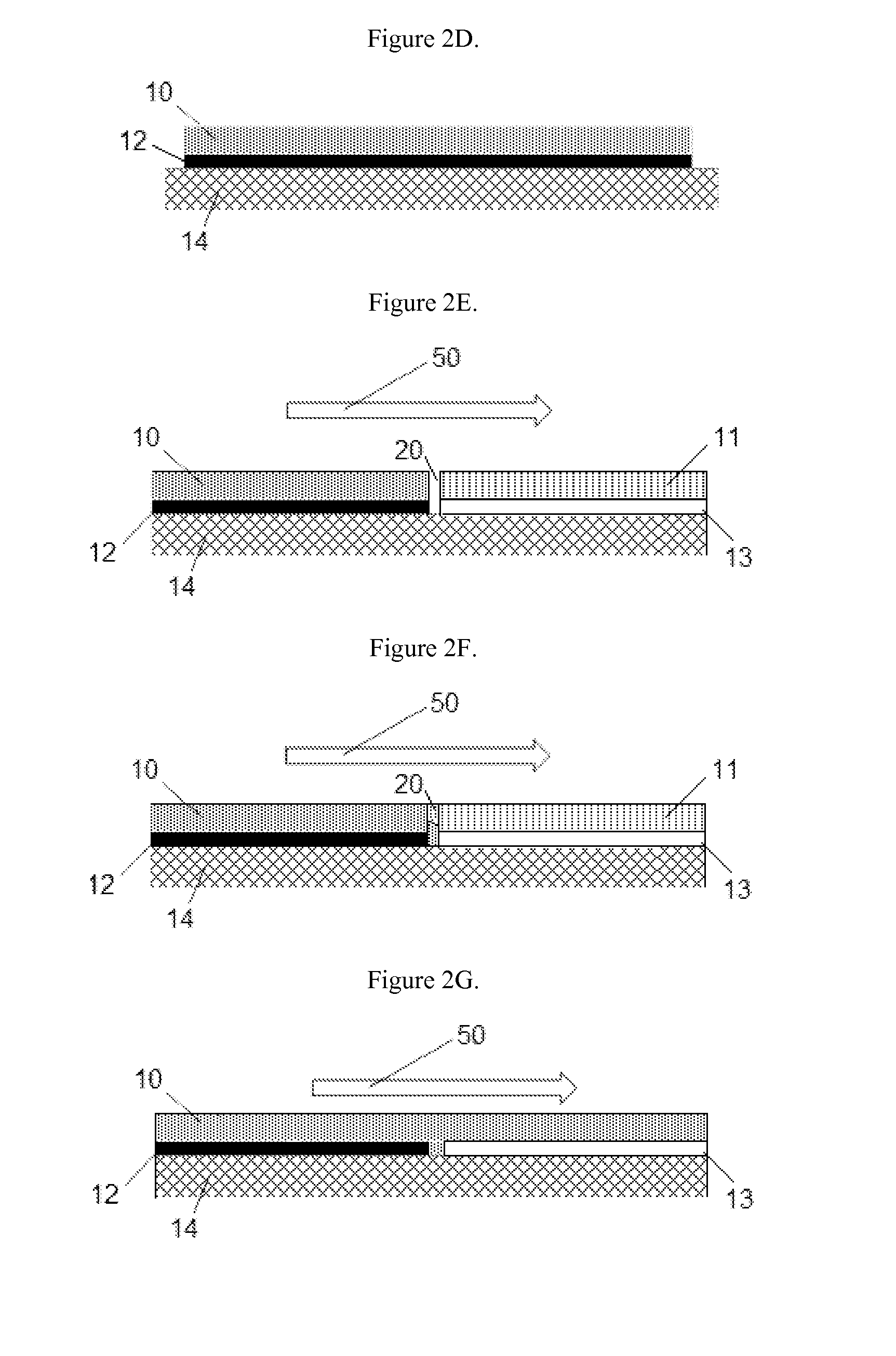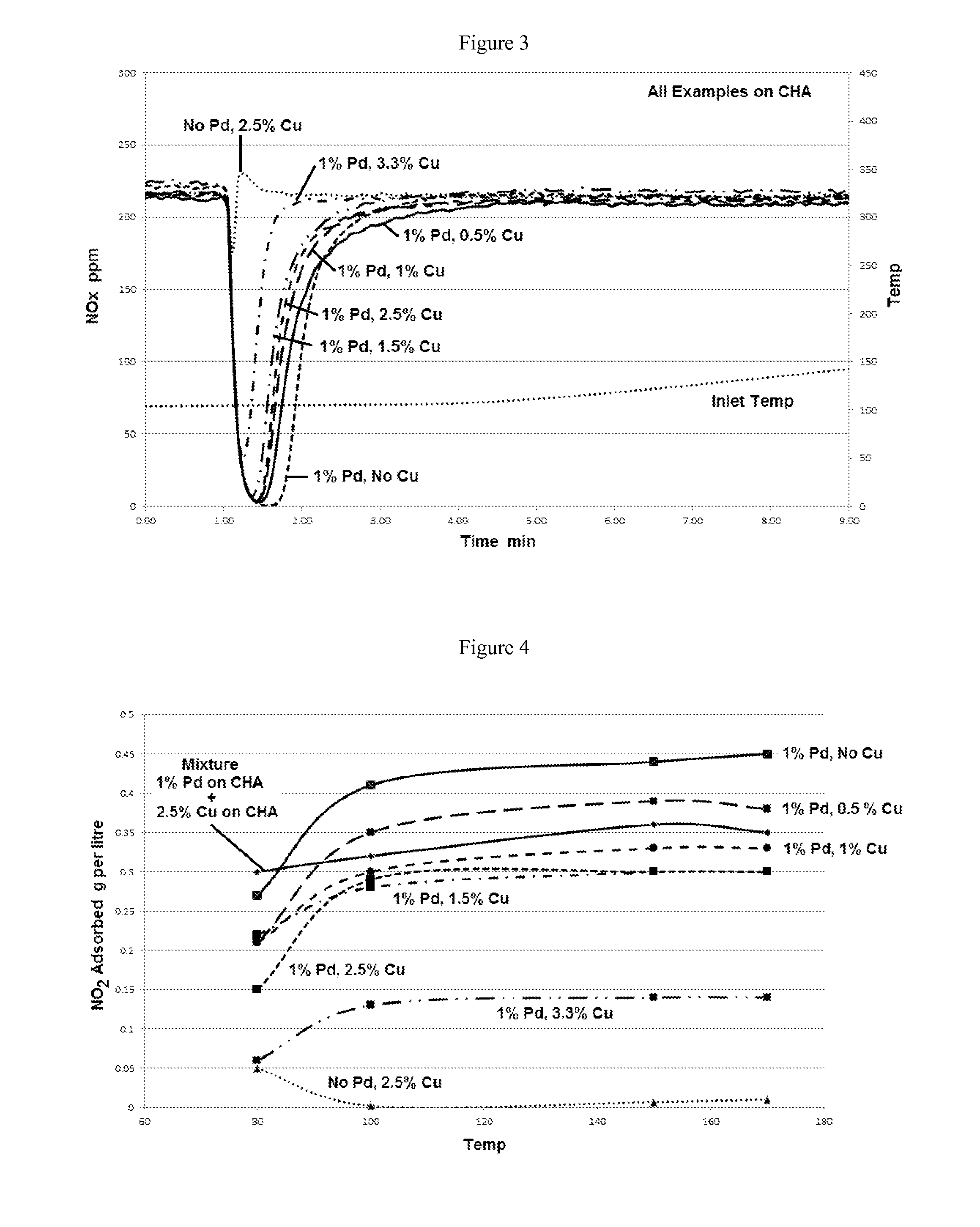Combining SCR with PNA for Low Temperature Emission Control
a technology of low temperature emission control and combining scr, which is applied in the direction of machines/engines, physical/chemical process catalysts, separation processes, etc., can solve the problems of difficult to address, reduce and relatively inefficient systems below operating temperature. , to achieve the effect of reducing the concentration of nox and reducing the concentration of stored nox
- Summary
- Abstract
- Description
- Claims
- Application Information
AI Technical Summary
Benefits of technology
Problems solved by technology
Method used
Image
Examples
example 1
Powder Samples with Fixed Pd of 1 wt % and Varying Cu Loading on CHA
[0116]A series of catalysts comprising copper and / or palladium containing aluminosilicate chabazites (CHA with a SAR ratio of 25) were prepared by incipient wetness impregnation using copper acetate and palladium nitrate solutions, with copper and palladium loadings shown in the table below. Comparative Catalysts 6 and 7 were each a single component only comprising Pd CHA or Cu CHA, respectively.
One ComponentComparative Catalyst 6:1 wt. % Pd CHAComparative Catalyst 7:2.5 wt. % Cu CHA
[0117]Each of Catalysts 8-12 below had two components, with the first component comprising Cu CHA in the amounts indicated below and the second component comprising 1 wt. % Pd. The Cu component was first impregnated on the chabazite and calcined before the impregnation of the given concentration of the Pd component. After drying at 100° C., the samples are calcined at 500° C. The samples were then hydrothermally aged at 750° C. in an air...
example 2
Powder Samples with Fixed Cu Loading and Varying Pd
[0123]A series of catalysts comprising copper and / or palladium containing aluminosilicate chabazites (CHA SAR) were prepared as described in Example 2 with a fixed Cu loading of 2.5 wt. % copper and varying palladium loadings between 0.2 wt. % to 1 wt. % shown in the table below. Comparative Catalyst 7, described above, was a single layer comprising a 2.5% Cu CHA. Each of Catalysts 13-15 below had two components, comprising 2.5% Cu CHA with Pd in the amounts indicated below.
Second Component with fixed Cu at 2.5 wt. %Catalyst 130.2 wt. % PdCatalyst 140.5 wt. % PdCatalyst 151.0 wt. % Pd
[0124]The samples were analyzed for their PNA and SCR activities as described above in Example 1. FIG. 7 shows the amount of NOx present in the gas over time. The graph shows a reduction in the concentration of NOx from about 1 minute to about 2 minutes. The greater the decrease in the NOx concentration and the length of time of the decrease, the higher...
example 3
Coated Monolith
[0127]A series of catalysts comprising copper or palladium containing aluminosilicate chabazites (CHA) having an SAR of 25 were prepared. The Cu loading was 2.5 wt. % and the Pd loading was 1 wt. %. Each of the catalysts was calcined at 500° C. and then milled to a D90 of about 5 μm. The milled samples were then slurried into a washcoat before coating on a monolith substrate with the Pd CHA as the bottom layer and the Cu chabazite as the top layer at the washcoat loadings shown in the table below for catalysts 3-5. Comparative Catalyst 1 was a single layer comprising Cu CHA at a loading of 2.5 wt. % and washcoat loading of 2.5 g in3. Comparative Catalyst 2 was a two layer catalyst with the upper layer comprising Cu CHA at a washcoat loading of 2.5 g in3 and the lower layer comprising ZnO at a loading of 2 g per in3. The samples were then calcined in air at 500° C.
Top LayerBottom LayerCatalyst 32.5 g / in3 Cu CHA1.5 g / in3 Pd CHACatalyst 41.5 g / in3 Cu CHA1.5 g / in3 Pd CHAC...
PUM
| Property | Measurement | Unit |
|---|---|---|
| concentration | aaaaa | aaaaa |
| total weight | aaaaa | aaaaa |
| weight | aaaaa | aaaaa |
Abstract
Description
Claims
Application Information
 Login to View More
Login to View More - R&D
- Intellectual Property
- Life Sciences
- Materials
- Tech Scout
- Unparalleled Data Quality
- Higher Quality Content
- 60% Fewer Hallucinations
Browse by: Latest US Patents, China's latest patents, Technical Efficacy Thesaurus, Application Domain, Technology Topic, Popular Technical Reports.
© 2025 PatSnap. All rights reserved.Legal|Privacy policy|Modern Slavery Act Transparency Statement|Sitemap|About US| Contact US: help@patsnap.com



